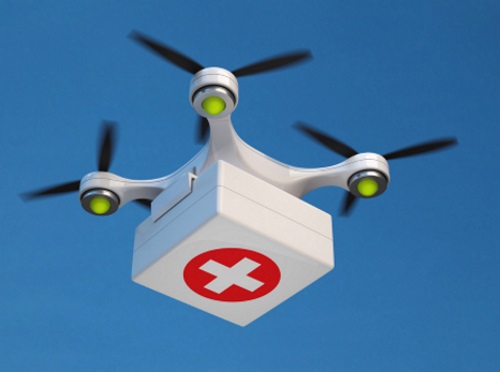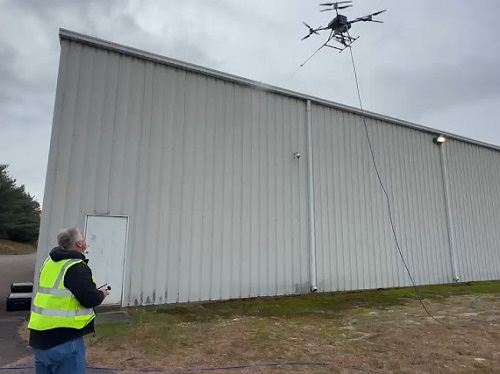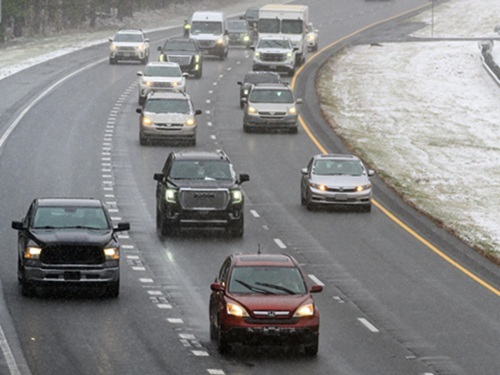The Federal Aviation Administration recently authorized multiple operators to fly commercial drones without visual observers in the same airspace in the Dallas area.
[Above image by FAA]
The FAA’s authorizations allow Zipline International and Wing Aviation to deliver packages while keeping their drones safely separated using Uncrewed Aircraft System Traffic Management or UTM technology, which allows private industry to manage commercial airspace with FAA safety oversight.
The agency said that, typically, when operating drones, the drone pilot must be able to always see the aircraft. However, new advancements in air traffic technology and procedures are providing a key step toward making such Beyond Visual Line of Sight or BVLOS flights safer.

Using UTM services, companies can share data and planned flight routes with other authorized airspace users. This allows the operators to safely organize and manage drone flights around each other in shared airspace, FAA noted.
The agency said all of those BVLOS drone flights are expected to occur below 400 feet altitude and away from any crewed aircraft.
Concurrently, FAA pointed out that this Dallas-area authorization occurs alongside its ongoing effort to release the “Normalizing UAS BVLOS” notice of proposed rulemaking or NPRM issued in July 2023, which would enable drone operators to expand operations while maintaining the same high level of safety as traditional aviation.
Meanwhile, state departments of transportation across the country are already using drones in a variety of applications.
The Arizona Department of Transportation said its technicians now use a drone to monitor for cracks, leaks, worn parts or other problems within 50 pump stations that remove storm runoff from many sections of Phoenix-area freeways.
The Arizona DOT added that drones let its crews examine areas that are difficult for them to access, including upper sections of pipes that lift stormwater from a pump station’s storage well.

The Washington State Department of Transportation Tacoma-area maintenance crew is currently testing drone technology that can remove graffiti from hard-to-reach places; applying paint from aerial positions to cover graffiti on bridge abutments and other types of transportation-related infrastructure.
Additionally, earlier this spring, the Minnesota Department of Transportation used drones for its “aerial mapping operations” in the northwestern part of the state; using the aerial devices to help create a record of existing infrastructure and landscapes along rights-of-way managed by the agency for transportation planning and highway design.
In February, several state agencies in Alaska – including the Alaska Department of Transportation & Public Facilities – field tested a drone-based avalanche mitigation technology; a system that uses drones to place and then remotely trigger explosives to create controlled avalanches in order to protect transportation infrastructure.
In December 2023, the FAA issued a wide-ranging drone waiver to the aeronautics division of the Massachusetts Department of Transportation that allows the agency to fly drones over the state’s entire railroad network outside the remote drone operators’ fields of vision.
And in August 2023, the Georgia Department of Transportation began participating in a “drone as a first responder” or DFR program along a stretch of I-85.
 Nation
Nation
Registration Open for AASHTO’s Winter Rail Meeting
December 19, 2025 Nation
Nation

